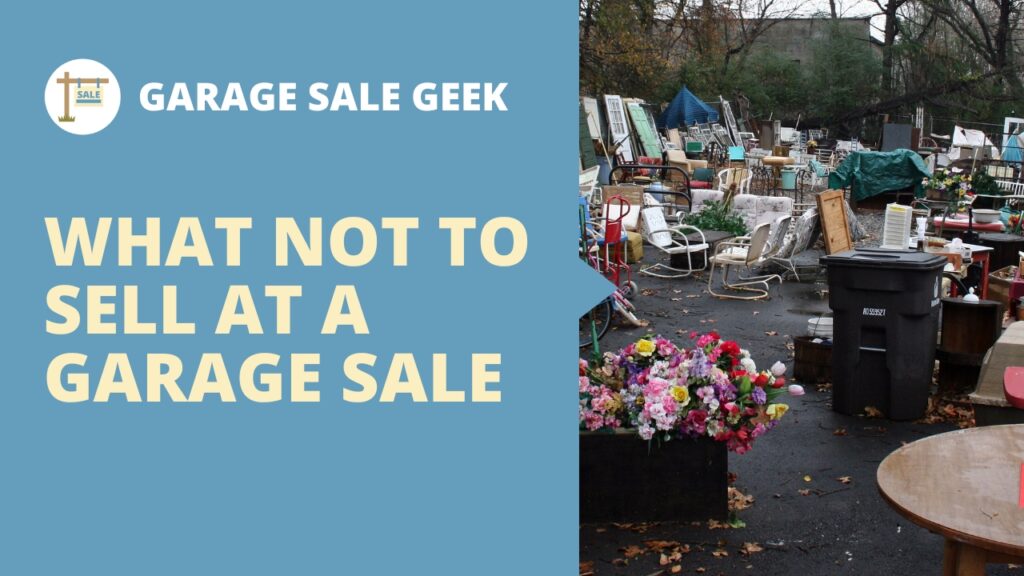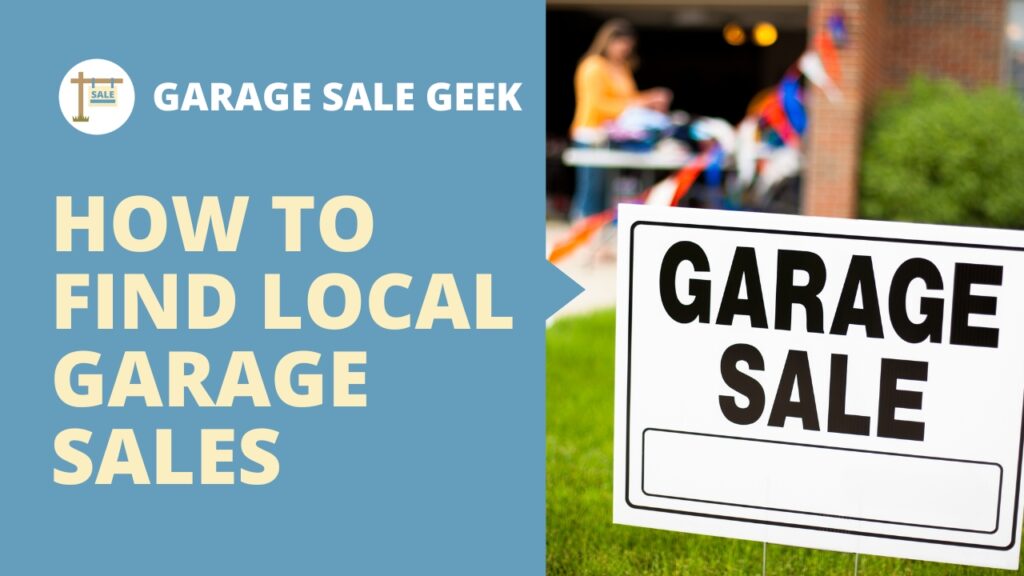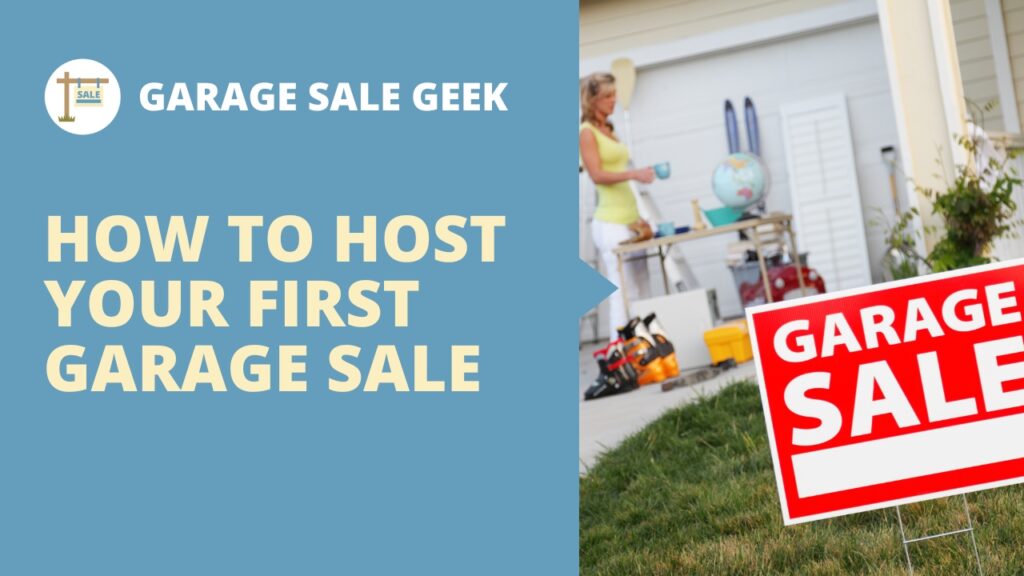
Everyone loves a good garage sale, right? The thrill of the hunt, the joy of the bargain, the satisfaction of decluttering your space – it’s an all-around win-win! But while it’s crucial to know what items fly off the garage sale tables, it’s equally important to understand which items might not catch a buyer’s eye.
Let’s face it, not everything in your attic, basement, or closets is going to be someone else’s treasure. Some items may have served their purpose and it’s time to let them go in a different way. It’s not just about getting rid of stuff, but about selling items that will genuinely add value to someone else’s life.
In this article, we’ll explore those items that, no matter how you price or display them, just might not be worth the table space at your next garage sale. Plus, we’ll share handy tips to help you decide what to let go of and what to bring out to the driveway. So, get ready to take notes and let’s get you set up for a successful and profitable garage sale, minus the duds!
Navigating the Garage Sale Market
Before we delve into the list of items that might not be garage sale gold, it’s important to get a sense of the garage sale market itself. Just like any marketplace, it has its own set of trends, demands, and customers.
One of the key components to grasp is that value is a subjective thing, especially at a garage sale. Something that has immense emotional value to you might not hold the same worth to someone else, and vice versa. This can make determining what will sell and what won’t a bit tricky.
High-demand items usually include useful, practical things that can be used right away, such as kitchen utensils, tools, children’s toys, and lightly used clothing. Additionally, unique items such as antiques, vintage collectibles, and handmade crafts often catch people’s eye and add a bit of intrigue to your sale. If you want to learn more about what items you should sell, check out our article on the 10 best items to sell a garage sale.
However, even in this world of ‘one man’s trash is another man’s treasure’, there are items that can prove tough to sell. While there’s always the chance of the right buyer coming along, some things are universally less appealing to the garage sale crowd. Understanding this can help you streamline your offerings and ensure your sale is filled with items that are more likely to find a new home.
Now, with this understanding of the market, let’s take a look at those items that you might want to think twice about before placing them out for your next sale.
The Garage Sale No-No’s – Items to Avoid Selling
As we step into this territory, remember that there are always exceptions, but the items listed here tend to be less attractive to the average garage sale goer. Understanding why can help you set up a more successful sale.
- Old Mattresses: While it might be tempting to try to get a few bucks for your old mattress, this is generally a hard pass for most shoppers. Mattresses can be a hotbed for allergens, bed bugs, and other ickiness that people just don’t want to bring into their homes.
- Heavily Used Personal Items: This can include worn out shoes, used makeup, worn-out undergarments, and personal care items. While lightly used items in these categories can sell, once they cross a certain threshold of use, they tend to lose their appeal. It’s not just about the ‘ew’ factor but also about quality and longevity.
- Outdated Technology: Technology evolves at an impressive speed, leaving many of our old gadgets feeling like ancient relics. The old flip phone or bulky desktop from the early 2000s might feel like a nostalgic treasure to you, but to others, it’s just outdated tech taking up space. Unless it’s a vintage piece with collector appeal, it’s often best left out of the sale.
- Old Tires: Used tires can be a hard sell due to safety concerns. Worn treads or old rubber can be a hazard on the road. Unless they’re in excellent condition, you might find no takers.
- Incomplete or Broken Items: People come to garage sales looking for a bargain, but they still want items that work. A board game missing half its pieces or an appliance that’s on the fritz isn’t likely to sell. If you do decide to sell items ‘as is’, be sure to clearly mark them as such.
- Expired Items: This includes anything from expired canned goods to out-of-date car seats and expired medications. These items aren’t just unappealing, but they can also be unsafe.
Remember, garage sales are all about finding new homes for your unwanted items while making a bit of cash on the side. By focusing on selling items that are in good condition, desirable and relevant, you’re setting yourself up for a successful sale. It’s all about knowing what to sell – and what not to sell – at your garage sale.
Ah, the pre-garage sale sort-out! It’s a task that can feel a bit overwhelming, but it’s also an opportunity to declutter and evaluate what’s really worth selling. Here are some tips to help you make those tricky decisions.
Tips for Evaluating Your Garage Sale Inventory
- Consider Condition: As we’ve already touched on, the condition of an item plays a huge role in its value. A good rule of thumb is if you wouldn’t buy it in its current state, it’s probably not going to sell. Look for items that are still functional, clean, and presentable.
- Know Your Audience: Think about the typical garage sale attendee in your area. Are they families? Collectors? College students? Understanding who might be shopping can help guide what items to put out.
- Assess Demand: Some items, like vintage furniture or brand-name clothing, tend to be in high demand. Others, like outdated electronics or incomplete sets, typically aren’t. If you’re unsure about an item, a quick online search can often tell you how in-demand an item is.
- Check for Safety Recalls: Especially important with children’s items and electronics, make sure you check for recalls before selling an item. The last thing you want is to inadvertently sell an unsafe product.
- The One Year Rule: If you haven’t used or worn an item in the past year, it’s usually a good candidate for selling. Of course, there are exceptions, like special occasion attire or seasonal items, but if you’re struggling to decide, the one year rule can be a good decider.
- Does It Add Value?: Ask yourself if the item you’re considering selling adds value for the buyer. Does it have a use or purpose? Is it something that could bring joy or solve a problem? If the answer is yes, it’s likely a good choice for your sale.
Remember, the goal of hosting a garage sale is not just to get rid of stuff, but also to provide value to your shoppers while making a bit of money in the process. With careful curation of your sale items, you’ll be well on your way to hosting a successful garage sale.
Learn To Be A Savvy Seller
Just like in any business, a successful garage sale isn’t simply about setting up shop and hoping for the best. It’s about understanding your market, offering value, and being strategic about what you sell. Knowing what items to avoid selling can be just as important as knowing what’s likely to fly off your makeshift tables.
Consider the condition, demand, and audience when evaluating your garage sale inventory. It might seem like a bit more work upfront, but trust me, being thoughtful about what you sell can make the difference between having leftovers you’ll need to figure out what to do with, and pocketing a nice chunk of change.
Garage sales are an adventure and a opportunity – they offer the chance to meet interesting people, get rid of items you no longer need, and make a bit of money while you’re at it. But remember, the ultimate goal of your sale is to leave both you and your shoppers feeling like you’ve found a bargain. So go forth and sell smart, my fellow garage sale geeks. I can’t wait to hear about your success!
So remember, every item has a value for someone, but not every item is suitable for a garage sale. Think smart, plan well, and your garage sale is bound to be a hit. Happy selling!


